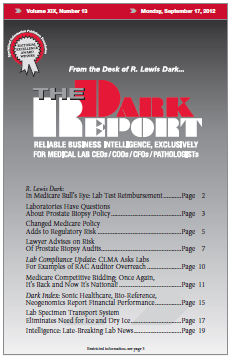CEO SUMMARY: Because of its unique design and reliability, a new product for transporting laboratory specimens and units of blood without the use of ice and dry ice is gaining favor with innovative laboratories across the country. Kaiser Permanente of the Mid-Atlantic States uses this ice-free specimen transport solution to move units of blood from …
Lab Specimen Transport Eliminates Need for Ice Read More »
To access this post, you must purchase The Dark Report.


